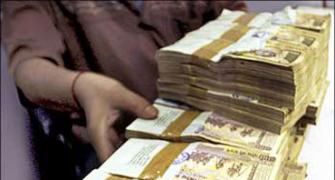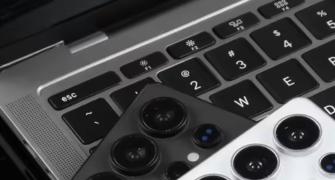 American investment bank and leading brokerage house Goldman Sachs said on Wednesday it sees the current rally in rupee to continue with the currency closing the year at 51 to the dollar.
American investment bank and leading brokerage house Goldman Sachs said on Wednesday it sees the current rally in rupee to continue with the currency closing the year at 51 to the dollar.
It pegged the CAD at 3.5 per cent for the fiscal.
"We remain positive on the rupee due to an improving current account deficit and greater capital inflows, in part due to the recent reform efforts by the government, as well as the global easing of liquidity.
"We maintain our 12-month rupee target at 51 to the dollar," Goldman said in a note on Wednesday.
Stating that CAD had peaked last fiscal, it said, "We continue to maintain our earlier forecast that the CAD may have peaked in FY12, and will likely trend down due to the sharp rupee fall. We expect the FY13 CAD at 3.5 per cent of GDP, down from 4.2 per cent in FY12."
The rupee has been on northward-ho since July, after hitting a life-time low of 57.13 mid-June. Since the beginning of the year, the local currency has gained over 7 per cent, and still it is down 18 per cent from its pre-August 2011 highs.
The rupee closed 2011 as the biggest loser among the BRIC currencies and still continues to be so.
The CAD, which is the difference between foreign currency earned and expended, touched a historic high of 4.3 per cent of GDP for the full year in FY12, while in Q2 of last fiscal it had touched a whopping 4.5 per cent of GDP.
Describing the improvement in balance of payments situation in Q1 as on "expected lines", Goldman said while CAD in Q1 was higher than consensus expectations, it was an improvement over Q4, leading
"While the CAD still remains high, we continue to believe that it may have peaked in FY12 and can continue to improve in FY13," Goldman said.
The 1Q CAD stood at $16.4 billion or 3.9 percent of GDP, while the BoP rose to $0.5 billion.
The CAD at 3.9 per cent, compared to the Q4 of last fiscal, though the reading came in worse than our consensus expectations, the report is mixed as the trade balance has improved, even though the services balance and external debt ratios worsened, the Goldman note said, adding both goods exports and imports declined.
Within imports, gold and silver declined 47.5 per cent y-o-y and growth in non-oil, non-gold imports continued to slide, coming in at 0.3 percent y-o-y, reflecting the slowdown in domestic demand, due to the hike in Customs on gold and a sharp fall in the rupee.
However, it said the dip in services exports has been greater than its expectation.
Explaining the reasons for the better BoP, the report notes that during the Q1, while FDI rose, portfolio flows declined by $1.9 billion, due to risk-averseness in markets.
The deregulation of interest rates on NRI deposits continued to bring inflows ($6.6 billion) against $4.7 billion in 4Q of FY12 and $1.2 billion in 1Q of FY12.
All this led to an overall BoP surplus.
But it pointed out that the higher NRI deposits also means that external debt rose further to $350 billion, an increase of $3.9 billion over the last quarter.
Short-term debt as a proportion of total debt too rose 40 bps to 23 per cent, and as proportion of forex reserves rose 120 bps to 27.8 per cent.









